Introduction
What To Feed A Pig: Feeding pigs is a fundamental aspect of pig farming, whether you’re raising them for commercial purposes or as part of your homestead. Proper nutrition is essential for the health, growth, and overall well-being of these intelligent and resilient animals. What you feed your pigs can have a significant impact on their performance, reproductive success, and overall quality of life. The key considerations and principles involved in providing the right diet for pigs at different stages of their lives, helping you make informed choices that promote their health and productivity. Seasoned farmer or considering pig-raising as a new endeavor, offer valuable insights into optimizing pig nutrition.
Pigs have been domesticated for thousands of years, and their dietary needs have been studied and refined to ensure they thrive under various conditions. Over time, the science of pig nutrition has evolved, leading to a better understanding of the specific nutrients, vitamins, and minerals necessary for their growth and well-being. Feeding pigs is not a one-size-fits-all approach. Pigs of different ages, sizes, and purposes have varying nutritional requirements. Whether you’re raising piglets, growing pigs for market, or maintaining breeding sows and boars, tailoring their diets to meet their specific needs is crucial.
Factors like the environment, genetics, and the availability of feed resources can influence your feeding strategy. Understanding what to feed a pig is a critical foundation for successful pig husbandry. The essential components of a pig’s diet, the types of feeds available, and the considerations that should guide your feeding decisions. We’ll also discuss the importance of balancing nutrition, the role of foraging and grazing, and how to address common dietary challenges. You’ll be equipped with the knowledge and insights necessary to make informed choices about feeding your pigs, ensuring their health, happiness, and success in your care.
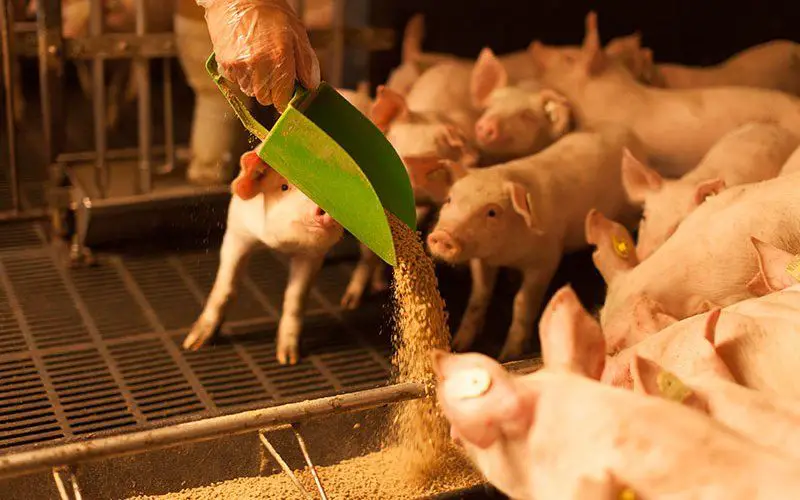
What is the best thing to feed pigs?
Good pig feed contains sufficient energy, protein, minerals and vitamins. Rice bran, broken rice, maize, soya-beans, cassava, vegetables and distillers’ residues are often used in pig feed. Distillery waste is much appreciated in traditional pig husbandry, especially for pigs.
Grains: Grains like maize (corn), barley, wheat, and oats are excellent sources of energy for pigs. They provide carbohydrates that serve as a primary energy source in their diets.
Protein Sources: Pigs require protein for muscle development and overall growth. Common protein sources include soya beans, soybean meal, sunflower meal, canola meal, and fish meal. These ingredients are rich in essential amino acids necessary for pig health.
By-Products: By-products like rice bran, broken rice, and distillers’ residues from the ethanol or alcohol industry can be valuable additions to pig feed. They can provide both energy and protein when used in the right proportions.
Root Crops: Cassava, sweet potatoes, and other root crops can be included in pig diets to provide additional energy and nutrients.
Vegetables: Fresh or cooked vegetables, such as leafy greens, carrots, and pumpkins, can be used to supplement a pig’s diet, providing essential vitamins and minerals.
Mineral and Vitamin Supplements: To ensure that pigs receive all the necessary vitamins and minerals, it’s common to include mineral and vitamin supplements in their feed. These supplements help prevent nutritional deficiencies.
Forage and Grazing: Pigs can also benefit from foraging and grazing if they have access to pasture or a range area. This natural behavior allows them to consume grass, roots, and other vegetation, adding diversity to their diet.
Water: Access to clean and fresh water is absolutely essential for pigs, as it aids in digestion, regulates body temperature, and supports overall health.
What should you not feed a pig?
It’s ok to feed pigs uncontaminated fruits, vegetables, bread, grains, dairy, eggs, and vegetable oils. Do not feed pigs meat, fish, or their bones, oils, or juices, or ANY food that has touched these substances. All food scraps can be composted.
Meat and Fish: Do not feed pigs meat or fish. Pigs are not natural carnivores, and feeding them meat or fish can lead to health problems and create unbalanced diets.
Bones: Pigs should not be given bones, as they can splinter and cause internal injuries or blockages in the digestive system.
Oils and Juices: Avoid feeding pigs oils and juices, especially those from meat or fish. These can be too fatty and can upset their stomachs.
Spoiled or Moldy Food: Never feed pigs food that is spoiled, moldy, or contaminated. Mold can produce mycotoxins, which are harmful to pigs.
Processed Foods: Pigs should not be fed heavily processed foods high in salt, sugar, or additives. These can be detrimental to their health.
Raw Eggs: While some cooked eggs can be included in their diet, raw eggs may carry the risk of salmonella contamination, so it’s best to avoid them.
Garlic and Onions: Foods like garlic and onions can be toxic to pigs and should be avoided.
Citrus Fruits: Citrus fruits like oranges and lemons are too acidic for pigs and can cause digestive issues. It’s best to avoid feeding them.
Avocado: Avocado can contain a substance called persin, which is toxic to pigs. It’s best not to include avocados in their diet.
Junk Food: Avoid giving pigs junk food, such as candy, chips, or sugary snacks. These foods offer little to no nutritional value and can be detrimental to their health.
Milk: While dairy products are generally safe for pigs, some may have lactose intolerance. It’s best to introduce dairy gradually and monitor their tolerance.
Alcohol: Never give pigs alcohol, as it can be toxic to them and have severe health consequences.
What kind of food do you feed pigs?
Soybean meal is by far the most common feedstuff used to supply pigs with essential amino acids. Alternatives such as whole soybeans, field peas, alfalfa meal, canola meal, linseed meal, sunflower meal, whey, fish meal, plasma protein, and meat and bone meal exist.
Soybean Meal: Soybean meal is a widely used source of high-quality protein and essential amino acids in pig diets. It is often the primary protein source.
Whole Soybeans: Whole soybeans can also be used in pig diets, but they need to be processed or roasted to reduce antinutritional factors.
Field Peas: Field peas are another legume that can be included in pig feed to provide protein and energy.
Alfalfa Meal: Alfalfa meal is a forage source that adds fiber and protein to pig diets.
Canola Meal: Canola meal is a by-product of oil extraction from canola seeds. It is used to provide protein and energy in pig feeds.
Linseed Meal: Linseed meal, derived from flaxseeds, can be added to pig feed for its protein and oil content.
Sunflower Meal: Sunflower meal is a by-product of oil extraction from sunflower seeds and is used as a protein source in pig diets.
Whey: Whey, a by-product of cheese production, can be included in pig diets to provide protein and lactose.
Fish Meal: Fish meal is a valuable source of high-quality protein and essential amino acids for pig growth.
What do pigs eat daily?
The bulk of their diet comes from corn and soybeans. Corn provides energy and soybeans provide protein. They also eat other grains like wheat and sorghum. Farmers may add supplements to ensure their hogs get necessary nutrients.
Grains: Corn and soybeans are commonly used as the primary components of a pig’s daily diet. Corn provides energy in the form of carbohydrates, while soybeans are an excellent source of protein and essential amino acids.
Other Grains: In addition to corn and soybeans, pigs may also consume other grains like wheat, sorghum, and barley. These grains contribute to the carbohydrate and energy content of their diet.
Supplements: To ensure pigs receive a balanced diet, farmers often add supplements. These supplements may include vitamins, minerals, amino acids, and additives to meet specific nutritional requirements and promote pig health.
Forage: Depending on the farming system and access to pasture or forage areas, pigs may graze on grass, root crops, or other vegetation. Foraging provides additional fiber and nutrients.
Vegetables and Fruit: Pigs can consume a variety of vegetables and fruits as part of their diet. This includes items like potatoes, pumpkins, apples, and other surplus produce.
Commercial Pig Feed: Many pig farmers use commercial pig feed, which is specially formulated to meet the nutritional needs of pigs at different life stages. These feeds are designed to provide a balanced mix of carbohydrates, protein, vitamins, and minerals.
By-Products: Some by-products from the food industry, such as bakery waste and food scraps that are safe for pigs to consume, can also be included in their diet.
Can you feed pigs rice?
Most results have shown that rice can be partially or completely used to replace corn in pig diets without negatively affecting pig growth and production.
Processing: Rice should be properly processed before feeding it to pigs. This can involve methods such as cooking, steaming, or rolling to improve its digestibility and nutritional value. Raw rice can be difficult for pigs to digest and may result in reduced nutrient absorption.
Balancing the Diet: While rice can provide carbohydrates and energy, it lacks some of the essential amino acids and other nutrients that pigs need for optimal growth and health. Therefore, it should be used as part of a balanced diet that includes other feed ingredients rich in protein, vitamins, and minerals. This may involve adding supplemental protein sources like soybean meal or other grains to the pig’s diet.
Variety: As with any feed ingredient, it’s beneficial to offer pigs a variety of foods to ensure they receive a wide range of nutrients. Combining rice with other grains, forages, and vegetables can help create a more well-rounded diet.
Quality Control: Ensure that the rice used in pig feed is of good quality and free from contaminants or molds that could be harmful to pigs.
Consultation: It’s advisable to work with a veterinarian or pig nutritionist to develop a feeding program that incorporates rice and other ingredients in the right proportions to meet the specific nutritional needs of your pigs.
What do pigs eat naturally?
In nature, pigs root around and eat a variety of things that are vegetables, fruits, insects, worms, mushrooms, eggs, and occasionally small mammals. They are opportunistic in their eating, so they will consume what is available to them at the moment.
Vegetables: Pigs will readily consume a variety of plant matter, including roots, tubers, leaves, and stems. They are known to dig and root around in the soil to unearth and consume plant roots and bulbs.
Fruits: Pigs enjoy eating a range of fruits such as apples, pears, berries, and figs when they are in season and accessible.
Insects: Pigs are excellent foragers and will eagerly hunt for insects, including beetles, grubs, ants, and termites. Insects provide a source of protein in their diet.
Worms: Earthworms are a natural food source for pigs and are rich in protein.
Mushrooms: Pigs may forage for mushrooms in wooded areas. However, not all mushrooms are safe for pigs, and some can be toxic, so caution is required.
Eggs: Pigs have been known to raid nests and consume bird eggs when they come across them.
Small Mammals: In some cases, pigs may capture and consume small mammals, such as rodents or nestling animals.
Plant Matter: Pigs will eat a variety of plant matter, including grasses, herbs, and even aquatic plants if they have access to wetlands.
Minerals: Pigs may also consume soil and minerals to supplement their diet with essential nutrients and minerals that may be lacking in their primary food sources.
What is the simple feed for pigs?
The simplest way to feed a pig is to give grain, such as corn-on-cob, wheat or barley, a protein supplement alfalfa leaf left over from the hay fed to goats, and a mineral mixture ratio in separate compartments of an automatic hog feeder.
Grains: Grains like corn, wheat, and barley serve as the primary source of energy in the pig’s diet. Corn-on-cob can be an excellent choice, as it provides both grains and some additional fiber, which can be beneficial for the pig’s digestion.
Protein Supplement: Pigs require protein for muscle development and overall growth. A protein supplement, such as soybean meal or another available source, can be added to the diet to ensure they receive sufficient protein. This supplement helps balance the protein content in their diet, as grains alone may not provide enough protein.
Alfalfa: Alfalfa, especially the leafy portion, can be included in the diet to provide additional nutrients, including fiber, vitamins, and minerals. It can be a valuable forage source for pigs.
Mineral Mixture: Pigs need essential minerals and vitamins for proper growth and health. A mineral mixture should be provided separately in a dedicated feeder to allow the pigs to access it as needed. This ensures they can meet their specific mineral requirements.
Automatic Hog Feeder: Using an automatic hog feeder can help ensure a consistent and controlled supply of feed to the pigs. This type of feeder allows them to access the grains, protein supplement, and alfalfa separately, promoting efficient feeding and reducing waste.
How much does 1 pig eat a day?
Between 5 and 7 pounds per day
The average amount that your pig will grow a day is between 1.7 and 2.0 pounds. 2. The average amount of feed your pig will consume a day is between 5 and 7 pounds per day.
Age and Growth Stage: Young piglets and growing pigs typically consume more feed in relation to their body weight compared to mature pigs. As pigs grow, their feed requirements increase.
Breed: Different pig breeds may have varying growth rates and feed efficiency. Some breeds are known for their ability to convert feed into weight more efficiently than others.
Weight: The size and weight of the pig also impact its daily feed intake. Larger pigs generally eat more than smaller ones.
Health and Condition: Pigs that are sick or stressed may reduce their feed intake, while healthy and well-managed pigs are more likely to eat their full ration.
Nutritional Requirements: The composition of the pig’s diet, including the percentage of protein, energy, and other nutrients, can influence how much they need to eat to meet their nutritional needs.
Environmental Conditions: Temperature and environmental stressors can affect a pig’s appetite and feed consumption. Cold weather, for example, may increase their energy requirements.
Purpose: The purpose for which the pig is being raised e.g., for meat production, breeding, or maintenance will also determine its daily feed requirements.
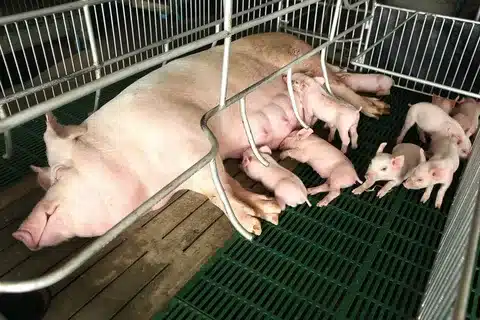
Conclusion
Determining what to feed a pig is a crucial aspect of responsible pig farming or raising pigs as pets. A well-balanced and nutritionally adequate diet is essential for the health, growth, and overall well-being of pigs. To consider the age, weight, and purpose of the pig when selecting a feed regimen. For young piglets, a starter feed with higher protein content is necessary to support their rapid growth and development.
As they mature, transitioning to a grower feed with slightly lower protein levels is appropriate. Finally, for adult pigs, a maintenance or finishing feed with balanced nutrients should be provided to ensure they maintain a healthy weight and muscle condition. It’s essential to consult with a veterinarian or an experienced pig nutritionist to create a specific feeding plan tailored to the individual needs of your pigs.
Factors such as access to clean water, proper housing, and regular health checks play a crucial role in ensuring the nutritional needs of pigs are met. Ultimately, providing a nutritious and well-balanced diet to your pigs not only ensures their health but also contributes to their productivity and quality of life. By adhering to sound feeding pig practices and monitoring their condition, you can promote the well-being of your pigs and achieve your desired outcomes.

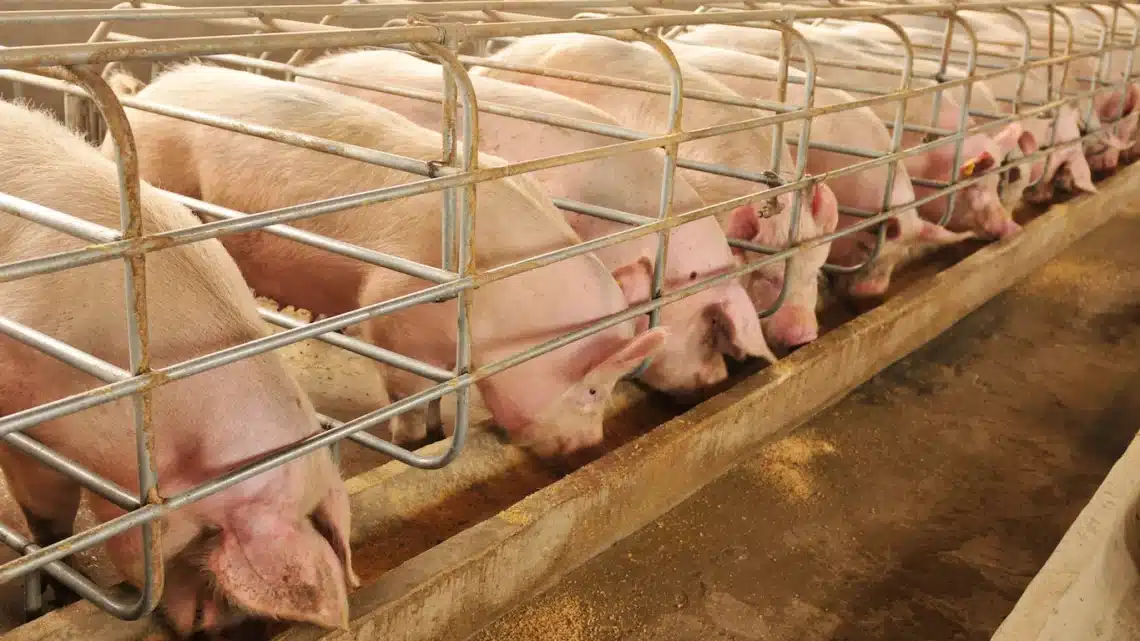
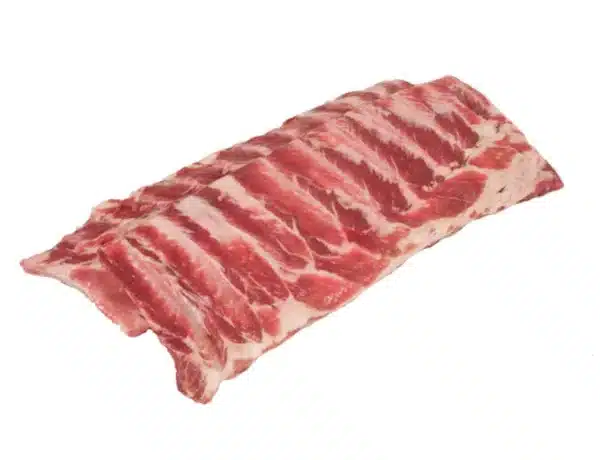
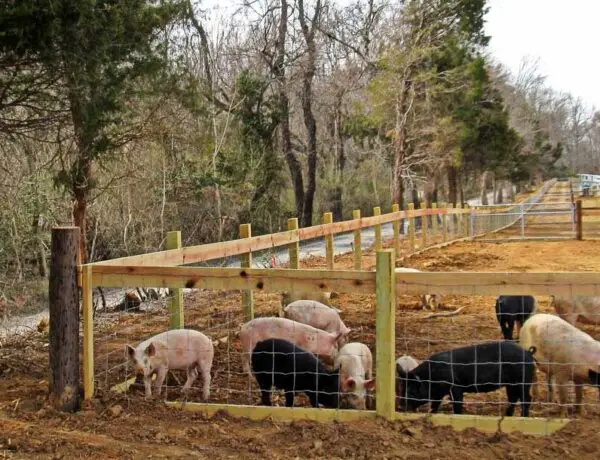
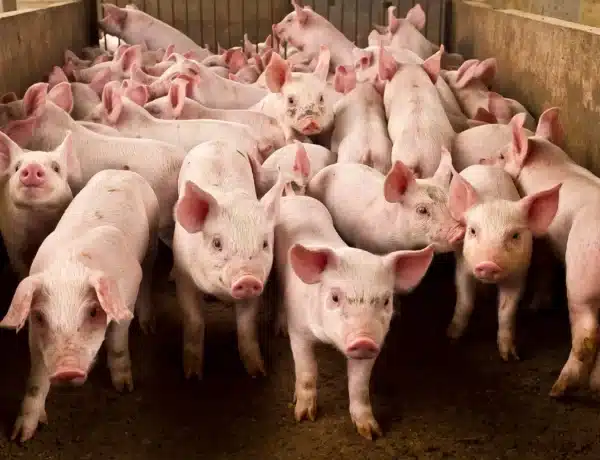
No Comments